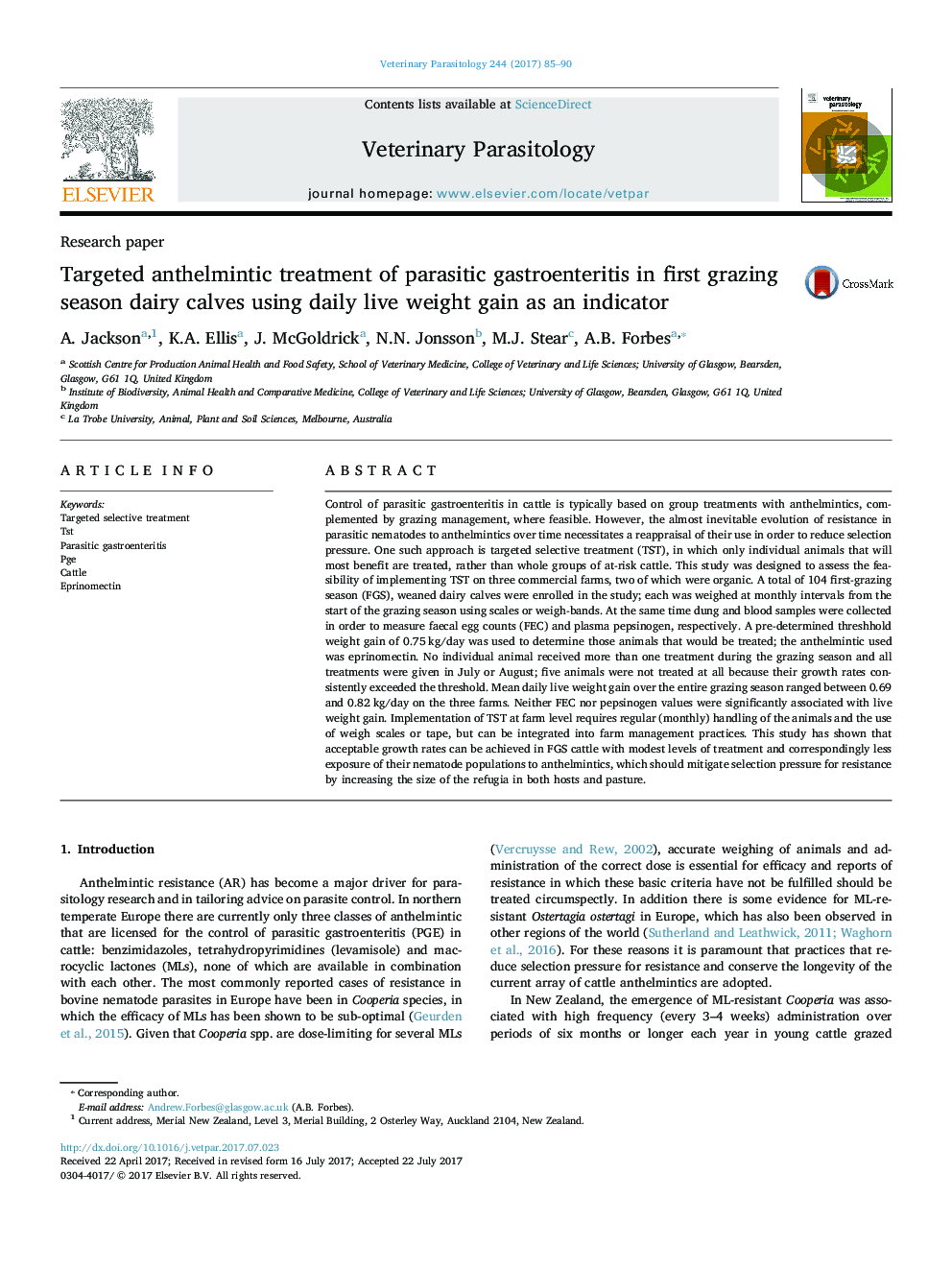| Article ID | Journal | Published Year | Pages | File Type |
|---|---|---|---|---|
| 5545552 | Veterinary Parasitology | 2017 | 6 Pages |
Abstract
Control of parasitic gastroenteritis in cattle is typically based on group treatments with anthelmintics, complemented by grazing management, where feasible. However, the almost inevitable evolution of resistance in parasitic nematodes to anthelmintics over time necessitates a reappraisal of their use in order to reduce selection pressure. One such approach is targeted selective treatment (TST), in which only individual animals that will most benefit are treated, rather than whole groups of at-risk cattle. This study was designed to assess the feasibility of implementing TST on three commercial farms, two of which were organic. A total of 104 first-grazing season (FGS), weaned dairy calves were enrolled in the study; each was weighed at monthly intervals from the start of the grazing season using scales or weigh-bands. At the same time dung and blood samples were collected in order to measure faecal egg counts (FEC) and plasma pepsinogen, respectively. A pre-determined threshhold weight gain of 0.75Â kg/day was used to determine those animals that would be treated; the anthelmintic used was eprinomectin. No individual animal received more than one treatment during the grazing season and all treatments were given in July or August; five animals were not treated at all because their growth rates consistently exceeded the threshold. Mean daily live weight gain over the entire grazing season ranged between 0.69 and 0.82Â kg/day on the three farms. Neither FEC nor pepsinogen values were significantly associated with live weight gain. Implementation of TST at farm level requires regular (monthly) handling of the animals and the use of weigh scales or tape, but can be integrated into farm management practices. This study has shown that acceptable growth rates can be achieved in FGS cattle with modest levels of treatment and correspondingly less exposure of their nematode populations to anthelmintics, which should mitigate selection pressure for resistance by increasing the size of the refugia in both hosts and pasture.
Related Topics
Life Sciences
Agricultural and Biological Sciences
Animal Science and Zoology
Authors
A. Jackson, K.A. Ellis, J. McGoldrick, N.N. Jonsson, M.J. Stear, A.B. Forbes,
